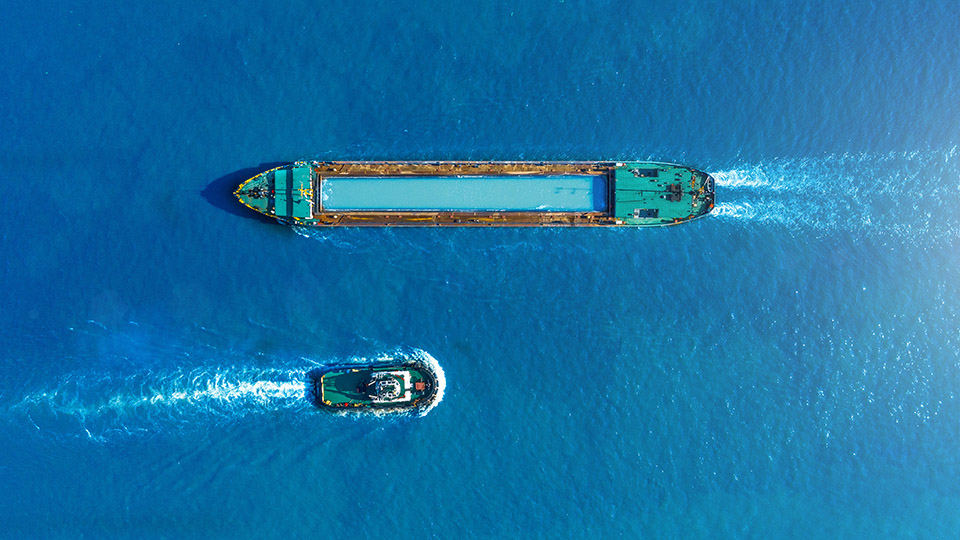

Warnings to barge operators – a critical look at BIMCO’s BARGEHIRE 2021

Each year, around 800 Bimco BARGEHIRE contracts are signed, currently on its SmartCon platform. It is understandable, with such an uptake, that Bimco should periodically review this barge-leasing contract. The most recent iteration of the 1994 and 2008 versions was published in 2021.
The above usage excludes hybrid versions developed in-house by some of the major charterers, some of which deviate substantially from the balanced provisions of the Bimco drafts, typically seeking to pass costs and liabilities to the owner.
With the market recovering in owners’ favour, there may now be scope for less red ink. This is an opportune moment to look at some of its working provisions.
Bimco describes the contract as a bareboat charterparty specifically designed for unmanned, non-self propelled seagoing barges under which the charterer obtains possession and full control of the barge along with legal and financial responsibility including, optionally, for both hull and machinery and protection and indemnity insurance.
One might be forgiven for asking, what could be simpler? In practice however it can get complicated.
The first issue is responsible owners are nervous of placing their barge’s ballast system, important at the time of loading and unloading, in the hands of third parties, even more so where semisubmersible barges are concerned.
The thought of flooding a large box section the size of a football field, bringing it back to the surface with an expensive jack-up, fish farm or super-yacht loaded on top for an ocean passage and then reversing safely that process a few weeks later is understandably a worrying one.
Therefore, unlike the typical bareboat charter of a ship, owners’ crew of ballast engineers are likely either to be required to attend or be accommodated on board. Where such a barge is on location undertaking routine operations, for example supporting a port construction project, their presence is likely to be permanent.
This critical addition of a human dimension, with consequent risk of blame that will follow in the event of a catastrophe, dictates careful attention where the allocation of contractual liabilities and the application of indemnities is concerned.
Most common, however, are the problems that arise on redelivery, particularly on long-term charters. BARGEHIRE 2008 contains a series of well-intentioned but awkwardly overlapping provisions that can be difficult to navigate around in practice.
These cover surveys at either end of the charter, inventories, alterations made by charterers, maintenance, responsibility for insurance and class, wear and tear and repairs during relevant remedial works.
At the core of the regime, and under the 2021 edition, is the requirement for a predelivery survey and redelivery inspection to identify issues prior to redelivery, allowing comments on a draft report and for the relevant party to plan the works.
The contract provides that the surveyor’s findings at inception and on redelivery are to be conclusive evidence of condition and binding on the parties.
The surveys clause (cl.I O in these editions) requires that where damage is found, the surveyor is to assess the cost and time, which is likely to be binding.
Unless the charterers step in to make good the repairs before actual redelivery, a claim against the charterers would then have to proceed on this basis, but with no certainty the actual cost and delay would correspond to the surveyor’s assessment.
Owners left with that task and expense run the risk of not being able to make a recovery in arbitration. Where no bank guarantee is in place and unless the cost of repair was recoverable from insurers, that might prove challenging.
The 2021 version is rather better drafted, referring to that damage specifically not repaired during the charter and requiring the surveyor to substantiate the estimates of time and costs.
Nevertheless, this regime is not straightforward. Ideally the barge should be at a repair yard at the time of inspection where a quote can be obtained and where the owners might undertake the works if necessary. Otherwise, the cost and duration may vary substantially between yards with significantly different mobilisation costs.
Owners could consider inserting a higher day rate applicable during such a period including deviation to and from the (hypothetical) repair yard to encourage a charterer not to leave over damage repairs, which might also impinge upon the barge’s availability for its next employment.
Take the example of a barge that is structurally reinforced at the charterers’ expense, but without those structures being class items. The project is for two years but with delays extends to five years during which little or no maintenance is done.
The removal costs are enormous, and the related hot work required to make good does impact on class and will also be time-consuming.
On the redelivery inspection, it is discovered moreover that corrosion prevention anodes have long since perished, ballast tank coatings are affected and extensive, but cosmetic paintwork has merely covered over rather than prevented the inevitable process of corrosion. None of these items are damage covered by insurance.
Charterers challenge the requirement to make good, arguing that all these items are not damage but ordinary wear and tear, decline to drydock for the necessary two months and stop paying hire while the parties argue.
Owners then discover that funding for the project, in which the barge played only a minor part, has been exhausted with large overruns and find themselves without a bank guarantee envisaged under cl.28 of the 2008 and cl.26 of the 2021 version.
On the basis that prevention is better than cure, owners should be encouraged to exercise their right to have the barge inspected (albeit in owners’ time) during the period of charter to identify such looming issues well in advance.
Additionally, while the updated 2021 version is the preferred barge hiring contract, owners’ right under the 2008 edition (lines 187-192) to suspend performance of their obligations in the event of non-payment of hire while still claiming hire has been removed.
With owners not always wishing to exercise their right to withdraw, this was a useful provision to employ against slowpaying charterers, at least where owners had material obligations; for example to undertake ballasting, insure or to maintain class.
Simon Tatham
August 2023
A version of this article first appeared in the publication “International Tug & Salvage” – Click here to read it.

